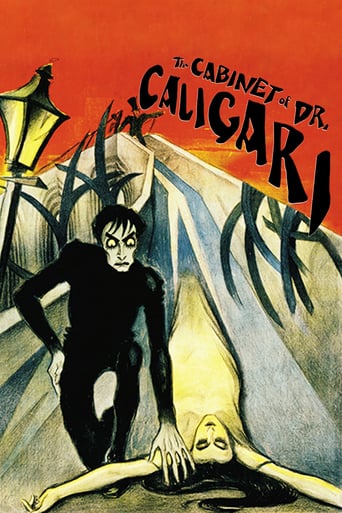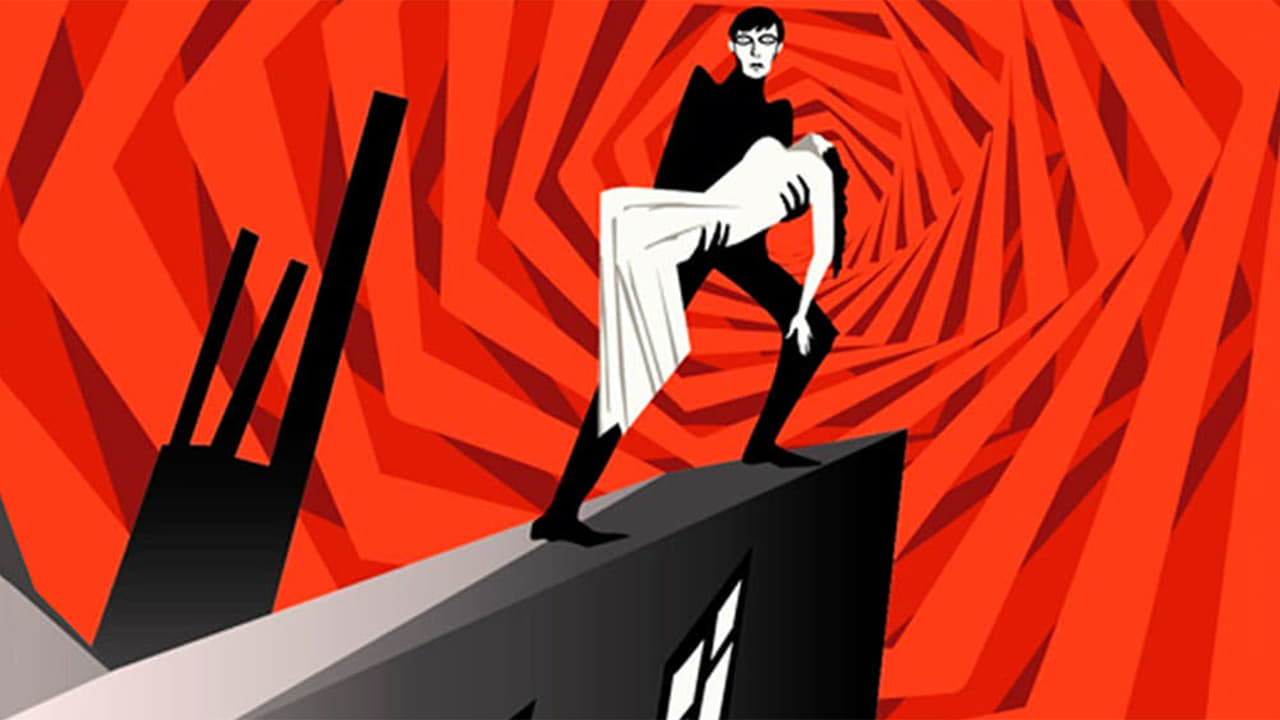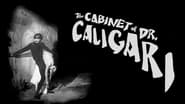rogerdarlington
This wonderfully radical German Expressionist work from director Robert Wiene is unusually wordy for a silent film but then it has quite an intricate plot with a surprise ending. It is not just the story that is original; the stage sets are full of disorientating features such as unnatural angles and and weird shapes. The whole idea is to draw the viewer into the madness at the heart of the narrative. But this was a very political work: the all-controlling Dr. Caligari (Werner Krauss) represents the authoritarian figure that has so often dominated German politics, while the somnambulist Cesare (Conran Veldt) who blindly does the doctor's bidding - even when it involves murder - stands for the German populace that allowed itself to be marched into the Great War.
Jamie Ward
Between the varying and conflicting production testimonies of its many players, the endless bizarre legends and anecdotes serving as catalysts for various design and creative choices; between all this there is a small, independent, seminal art-house movie that premiered in 1920 to resounding accolades, praise and most importantly for all involved, money. It was a success that surprised most of the people involved, but looking back at Caligari almost a century forward, it's easy to see how the film was at first universally adopted as revolutionary, and then analysed to death by scholars over the coming decades to the point where the actual film—that is, as a work of interpretive art and not something that desperately requires classification and resolute distinction in terms of motivations, political ideology, historical placement, influence and social stature —is often overshadowed by its lasting legacy as something more than just that.Rather than drive myself to madness attempting to unwrap the mystery of Janowitz, Mayer and Wiene's unending battle of dispute over who did what and why and where, I instead prefer to see Cabinet for what it is; a deceptively straight-forward murder-mystery that exists in a world of irregular angles and avant-garde design. And I'm not just referring to the movie's expressionist scenery which is, of course, what makes the most immediate impression on a first viewing. I'm also alluding to the twisted, dream-like state in which the characters move within their world, almost as if they were one in the same. You could argue, in fact, that they are cut from the same piece of cloth that never wants to settle down in a neat little arrangement until you wish to make use of it. Instead, both the characters and the world in Caligari demand your immediate attention from the very beginning and in a strange way it's hard to draw your attention elsewhere, even if everything does seem a bit otherworldly, strange and abstract.If you're looking for some sort of synopsis from this review, then best leave now. It's a relatively simple affair as I pointed out before, but even then there are many differing interpretations. My own is not in fact my own. Others share it, and it's relevant to us as individuals who see the movie the way we do, but the details of such a view aren't important to you as someone who—potentially—hasn't seen the film yet. Anyone else who has already seen it, more than likely already knows, or doesn't care. What is important, is simply the distinction that exists between Caligari and many films that came before it. It's open-ended, open to debate and, once more, refuses to be consolidated merely to straight, perpendicular angles with only one logical conclusion. This aspect, along with the overall style, atmosphere and artistic merit of the feature is what makes it special. On paper, it's nothing special, and by no means do I loft it as highly as other film historians, scholars or enthusiasts. Let me be clear. I'm not one to automatically prescribe "genius" to trailblazing films ahead of their time for that fact alone. Cabinet of Dr. Caligari is a great film, and an extremely important and influential one for sure. But it's not the pinnacle of the movement it begins. It's not perfect, and no, I don't believe it to be a masterpiece. Masterpieces are timeless, and while it's very easy to watch and enjoy Caligari a century on, it's still mostly important because of the time in which it was produced. Again, it's a simple affair. Simple, but extremely effective. So much so that it caused a cinematic revolution, the echoes of which we still hear today.
Leofwine_draca
The first feature-length horror movie ever made (not counting the hundreds of shorts made in the previous two decades, usually under five minutes each), this is classic stuff and rightly so. With an age-barrier of nigh on a century you might think that this movie, seen today, is very dated, and you'd be right. The lack of dialogue (although there's a fine music score), the theatrical acting and static direction may make this movie an effort to watch but the effort is well worth it. My main problem with these older films is that sometimes they can be very boring with little action, but that's not a problem here; the pacing is fast and the film is short which makes the time fly by.The plot, involving Caligari and his murderous somnambulist, may seem deceptively simplistic at first glance, but there are lots of little tricks thrown in to fool the viewer. Also, other characters whose lives act as other plot strands, flowing in and out of the central thrust of the story. All this and a twist ending to boot.The acting is generally top-notch, if you allow for the acting style of the period. Werner Krauss makes the most of his bookish Caligari, complete with horn-rimmed glasses and odd-looking attire; his outlandish and very atypical character makes him highly watchable. Stealing the show, though, is a very young Conrad Veidt (later to go on and pursue a successful Hollywood career) playing the somnambulist, around whom most of the action is centred. Veidt's striking appearance (black clothing, white eyes, black sunken eyes) fits together well with his understated acting approach so that he appears very deathly and almost like a living corpse; just looking at him gives you the creeps. The supporting characters are humane and normal and thus forgettable, but fine.What is most striking about this movie are the sets, most of which were constructed form paper or cardboard. The abstract drawings, and the oddly surreal, angular walls create a visually stimulating fantasy world for the sinister events to take place in. Much has been made of the "painted shadows" employed to give the movie more of a balance between black and white and the effort pays off. Karl Freund's photography certainly brings out the atmosphere of the sets and they're unforgettable. Like Tolkien did with Lord of the Rings, all involved with the making of this film transpired to create a believable fantasy world which is similar to, yet very different, from our own; an alternate reality perhaps. Whatever the motivation, the expressionist art displaying itself here made the movie a classic.Seen today, the horror is subtle and all of the murders offscreen (aside from one memorable shadow-play). A far cry from the movies of today and, indeed, the wealth of absurdly violent (heads, bodies being chopped apart) shorts made in the early 1900s. Yet the image of Veidt stalking his victims through long corridors have undoubtedly influenced all that has come after it, from Lugosi's Dracula to Michael Myers in HALLOWEEN. Altogether, THE CABINET OF DR. CALIGARI is a horror classic which should be seen at least once by any fan with a passing interest in the genre, or indeed in the cinema, as this is a highly influential and important film in every respect.
tom-durham
Back in the day when movies were new, you could film anything and people would watch it.Most movies you can speed up to 1.2x maybe 1.5x. This one was watchable at a whopping 3x-4x. You don't even have to be a fast reader! The actors pull faces and hardly move, which feels cartoonish. There are a couple of bits near the end where I slowed down to 2x but for the most part....Even at 4x speed not much happens.If you can't speed it up, prepare for a snore fest, a predictable plot and a twist that wasn't worth waiting for.The wacky cheaply made sets might pique your interest if you are into that sort of thing so I gave it an extra star for that.



 AD
AD














